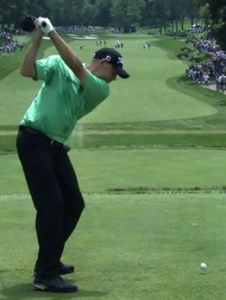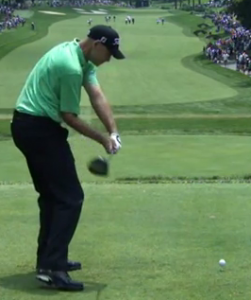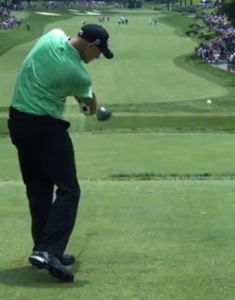This weeks PGA Tour stop was at PGA West in La Quinta, California, home of the Humana Challenge. This weeks event involved 156 professionals and is one of the more intriguing events on this year’s schedule due to it’s 54 hole event pro-am. This pushes the cut back one day from the norm, placing the low 70 professionals into the final round at a facility where if your not making birdies you are losing ground, and losing ground fast!
Heading into today’s final round you had an extremely crowded leader board of about 20 players within 3 shots of the lead. There was a lot of moving up and down the leader board in today’s final round and Bill Haas ended up only needing a par on his final hole to take home his second Humana Challenge victory. Haas, who shot a final round 67, has now quietly won 6 events on the PGA Tour and looks to have another strong season. Many of you may remember Bill Haas from his dramatic FedEx Cup victory in 2011 when he got up and down from the water in a playoff with Hunter Mahan.
Bill Haas has now established himself as one of the more consistent players on the PGA Tour. Last year was the only year he didn’t win an event on tour, and that was mostly due to him being injured for much of the season. There are a few specific things that I see in Haas full-swing technique that allows him to be so successful year after year, and I only tend to see these “positions” in about 30% of the tour players that I study, below I will show you what makes Bill Haas one of the top American players in the game.
Moveaway (P1): You will see as the shaft becomes parallel to the ground the shaft is inline with the feet. You will also see the leading edge of the clubface matches up nicely to the left forearm, placing the club in a “square” and on plane position.
Top Position (P3): At the top of the backswing Haas clubface stays in a “square” position continuing to match his left forearm. The left arm has moved across placing it on the same plane as the shoulders, and the club is pointing slightly left of his target, which is a position I like to see in players attempt to fade the golf ball. Haas natural ball flight is a fade!
The other functional key I love here has to do with how his body is turning and tilting. If you look at the angle of his knee’s, hips, and shoulders you will see they all match up. These angles are another example of why he is a consistent winner on the PGA Tour.
Parallel in the downswing (P5): As the shaft of the club becomes parallel to the ground just prior to impact you can see the clubface matches the same “toe up” or “square” position as we saw in his moveaway. The only thing that has changed is his body alignments, due to rotation, and the path the club is traveling on. This is a great position to strive for in your game
Parallel in the through-swing (P7): After impact I love how his body is going into extension as his arms are extending (straightening) down the target line. His arms are working nicely with the rotation of his body as well. Finally, you will see that the clubface is back in the “toe up” position as the shaft is parallel to the ground.
As you can see there is a reason why Bill Haas is a consistent winner each year on the PGA Tour. One of the biggest reasons is his ability to control the clubface throughout his golf swing. This leads him to make less manipulations with his body in order to get the correct face orientation at impact. Most tour players I see and study do not show the same consistency when it comes to clubface orientations. For that reason I look for Bill Haas to have a great 2015 season on the PGA Tour!
Next week the tour travels to Arizona for the fan favorite Waste Management Phoenix Open. Kevin Stadler will be defending his 2014 title and looks to have his hands full with many of the top players in the world competing including Tiger Woods and Phil Mickelson. Stay tuned for next weeks Weekly Winner’s Circle!





